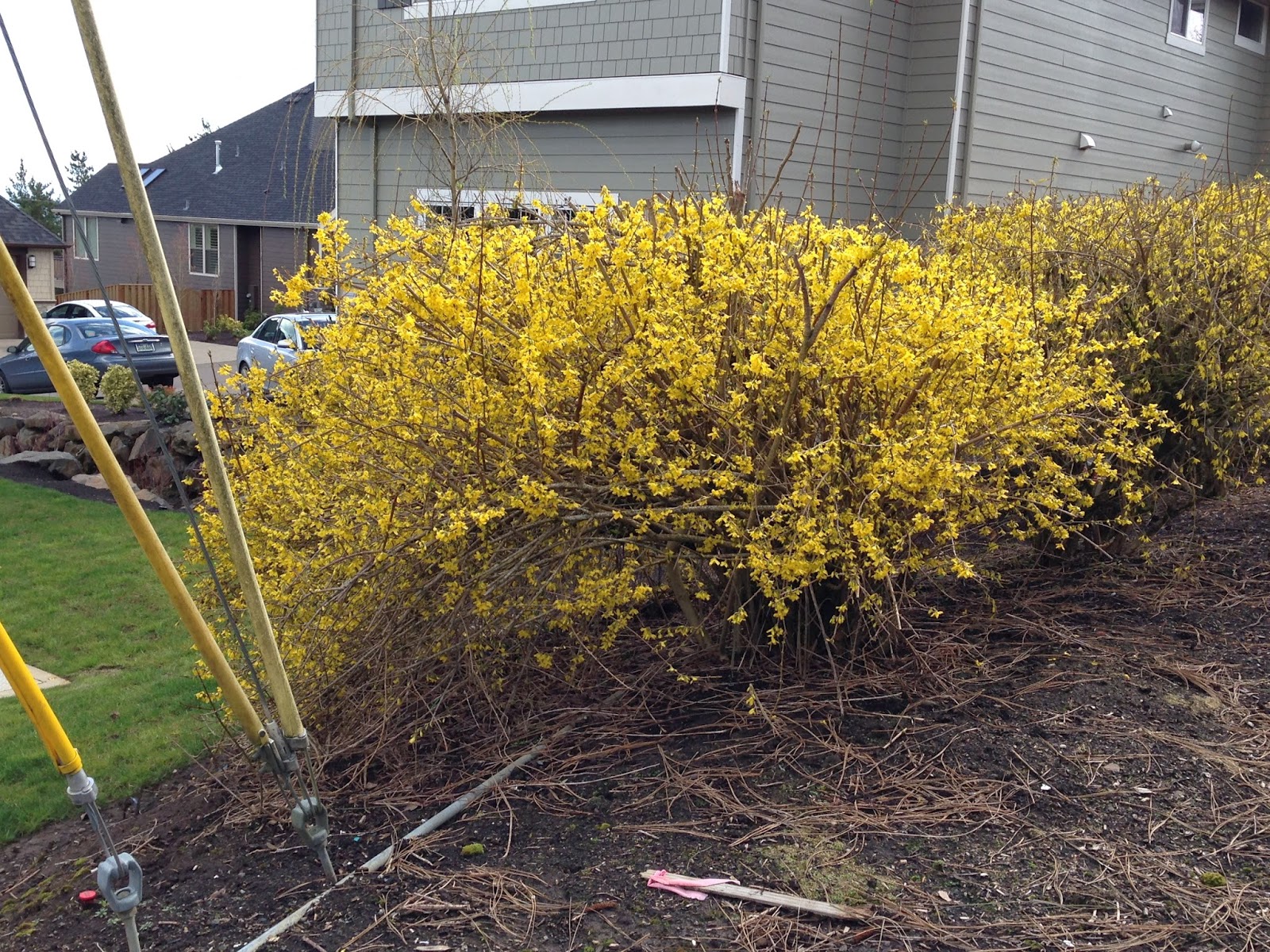 Eastern Redbud trees are a spring bloomer that I often
forget about. The blooms are unassuming,
at about ½” each, covering branches and stems in the spring before the leaves
emerge. They’re easy to miss after the
flurry of ornamental cherries, etc.
Ornamental fruit tree blooms are showy, while these beauties are diminutive. But overall, redbuds are better plants. In the course of its life, the Redbud will
grow 20’ tall and 25-30’ wide, with lovely heart-shaped leaves that are thin
and flutter easily. It is a durable
plant with few pests and diseases, provided that the tree is not under
stress. But redbuds do require regular
watering, particularly in drought conditions.
Like dogwoods, redbuds don’t like to be moved, so plant when the tree is
young. I think it’s particularly
stunning as a multi-trunk tree, rather than having one central leader. In its native conditions along the eastern
seaboard, the redbud is an understory tree, meaning that it grows beneath
larger trees, much like our native vine maples do in PNW forests. In hotter climates, the redbud will prefer
part sun, but in the PNW, they prefer more sun than shade.
Eastern Redbud trees are a spring bloomer that I often
forget about. The blooms are unassuming,
at about ½” each, covering branches and stems in the spring before the leaves
emerge. They’re easy to miss after the
flurry of ornamental cherries, etc.
Ornamental fruit tree blooms are showy, while these beauties are diminutive. But overall, redbuds are better plants. In the course of its life, the Redbud will
grow 20’ tall and 25-30’ wide, with lovely heart-shaped leaves that are thin
and flutter easily. It is a durable
plant with few pests and diseases, provided that the tree is not under
stress. But redbuds do require regular
watering, particularly in drought conditions.
Like dogwoods, redbuds don’t like to be moved, so plant when the tree is
young. I think it’s particularly
stunning as a multi-trunk tree, rather than having one central leader. In its native conditions along the eastern
seaboard, the redbud is an understory tree, meaning that it grows beneath
larger trees, much like our native vine maples do in PNW forests. In hotter climates, the redbud will prefer
part sun, but in the PNW, they prefer more sun than shade. | |
| A mature example of Redbud. |
There is a variety, ‘Forest Pansy,’ that is particularly
showy. Its new foliage in the spring is
a bright red-purple and the leaves mature to maroon. In autumn, the leaves turn red to orange,
depending on the day to evening temperature difference. Other small trees with beautiful purple
foliage include Cotinus (smoke bush),
Diablo Ninebark (Physocarphus ‘Diablo’), and Black Lace Elderberry (Sambucus ‘Black
Lace’). All three of these have summer
blooms, but Forest Pansy stands alone with its pink blooms on bare stems in the spring. Quite lovely.
 |
| Forest Pansy in summer. Photo from oregonstate.edu |
.














